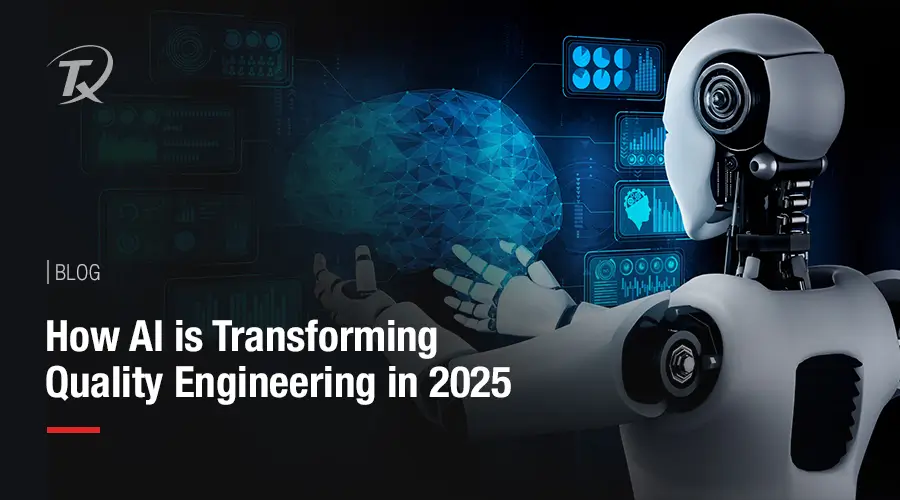
Contents
1. How to Evolve from Quality Assurance to Quality Engineering
2. The Big Burst – Choices, Challenges, and Complexities
3. Why QA needs an intervention?
4. But – How to evolve from QA to QE?
5. QE – More than a Vowel Change
How to Evolve from Quality Assurance to Quality Engineering
The report unravels how ‘user satisfaction’ is coming on the top of the stack of most Quality Assurance (QA) and testing strategies. The advent of customer-centred innovation, digital transformations, agile and DevOps approaches, Internet of Things (IoT), Cloud, etc. is fuelling this change. But above everything else, what stands out is a list of recommendations that make you reconsider the very role of QA.
The report urges professionals and managers to:
– Amplify the level of smart test automation
– Transform QA and test function to support agile development and DevOps teams
– Invest in smart QA and Test platforms, and
– Define a test platform strategy and QA strategy on an enterprise level
But these are no surprises. When the report noted that 99 percent of respondents are using DevOps in at least one of their projects and that automation is emerging as the biggest bottleneck that is holding back QA and testing today
– is it not just iterating what you see in your office and scrum-huddles every now and then?
The Big Burst – Choices, Challenges, and Complexities
We are in a time where devices are proliferating at a never-before speed, where 97 percent of respondents (in the report) show some kind of IoT presence in their products and where Cloud, DevOps, and Agile have ceased to be mere power point enhancers. They are now stark realities that software and application teams encounter and leverage every day.
No wonder, there is a pressing need to bring Software Development/Design Engineer in Test (SDETs) into the team; and to inject skills in security, non functional testing, test environments, and test data management among testers. The challenges and context of this modern software/applications world have created a seismic shake. It is a post-Uber planet where only the best will survive. And relying on QA alone is not going to make the cut here.
Why QA needs an intervention?
Quality Assurance (QA) only entails activities for ensuring quality, spotting flaws early enough, code review, analysis, and refactoring. But the users need a stronger and broader variant of this approach. One that goes beyond testing cycles, one that percolates into the culture and the very way developers and designers think about software. Yes, get set for the arrival of Quality Engineering (QE).
Quality Engineering transcends quality control, quality assurance, and testing. It is proactive, strategic, forward-looking, intuitive and is way bigger in scope than QA. It is not limited to processes and procedures. It expands into the realm of the way these processes come up – right at the nucleus of ideation and user-empathy. It straddles across all areas of QA and testing and lifts quality to an altogether new level.
You will notice that QA is inclined towards some earlier stages of the software development, and had a postcode-writing role wherein QA teams checked what developers had written. But QE is not the fag end of a software cycle. It is a radical way that starts way ahead of where code begins. It permeates the entire development flow. QE helps organizations and developer-tester teams to come together against the onslaught of the diversity as well as the exponential rise of too many devices, platforms, applications, and content needs.
QA alone would not suffice to match the speed, persistence, and thoroughness that the Agile development and Shift-Left world demands today. Quality Engineering ensures that quality is embraced early on and is enhanced at every step and desk – and not just at the exit door doormat of software code. It undertakes end-to-end and architectural approaches for comprehensive software quality.
But – How to evolve from QA to QE?
Organizations have to embrace this new culture and mindset to embark on this massive shift.
This is where a continuous integration model between developers and testers would come into play. Testing becomes consistent, embedded into code design and gets easy to integrate into the entire chain. Development becomes iterative, collaborative and adaptive. It also entails localization of problems and fixing of individual parts so that all red flags are addressed before the whole software adds up. Organizations will have to usher in a new way of looking at and designing the software development lifecycle. This has to be fortified with sustainable test automation frameworks and methodologies, as well as Continuous Integration endeavours.
Resources and bandwidth would have to be furnished so that a test infrastructure can flourish and integrate without any scalability or latency hiccups. Test environments and production environments would also need to be conjoined in a way that quality becomes a precursor rather than an afterthought. Automation of tests might be called for. QA folks might be asked to think and code like a user.
This is where the culture and habit parts would face a makeover. Helping and empowering others – beyond organizational silos, dependencies and software hierarchies – will be the new norm for Quality Engineering to get into action. Even the delivery aspects would change- get set for a scenario of multiple releases and entire-system-checks. QE teams are involved and impactful in software design at a new degree and depth; so that core functionality tests can be planned for with a proactive edge.
In short, the move to QE reflects but is not limited to, the switch-over from waterfall era to Shift-Left era of software. With QE in place, quality travels right up to the north-most point of any software.
QE is about thinking of quality all the time, at every level and by everyone around.
QE – More than a Vowel Change
Businesses in the current era of impatient customers cannot afford to have even a small disruption in their business-uptime. That gives a different gravity to quality. That is where QE shines. And a QE professional is much more than a coder or a tester.
Project managers and CTOs are gearing up to tap this new face and fuel of quality. It’s time for a new regimen – one that does more than simply measure.
Discover more
Get in Touch
Stay Updated
Subscribe for more info




